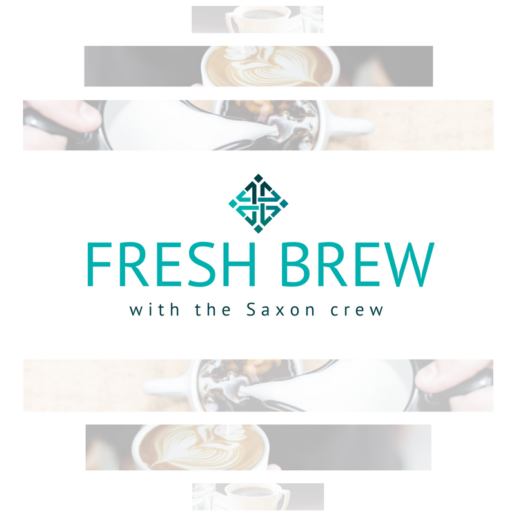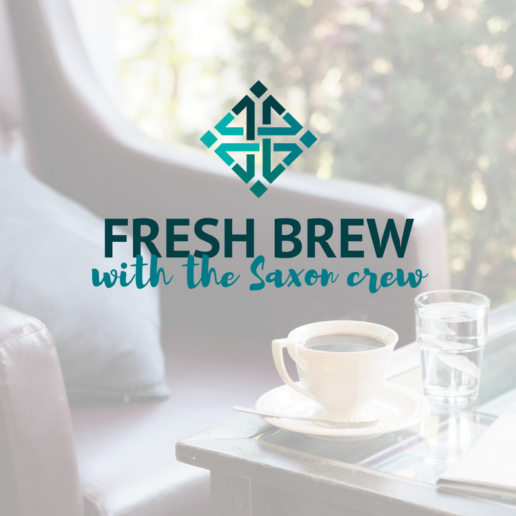How COVID-19 could be a financial wellness springboard
Although the coronavirus pandemic has brought many implications to watch during these times, health isn't the only thing. Many businesses could use COVID-19 as a way to monitor their financial wellness. Read this blog post to learn more.
Physical health isn’t the only thing to monitor during the COVID-19 pandemic, according to recent studies, which suggest the fate of businesses could depend on an ability to use financial wellness initiatives to restructure their financial and cultural mindset.
But what is financial wellness, and what can businesses do to cultivate it?
To enjoy financial wellness is to have control over daily and monthly finances, be able to meet financial goals, have enough rainy day money to survive an emergency and be able to splurge a little, according to the Consumer Financial Protection Bureau.
Of course, at this stage in the COVID-19 crisis, it’s all about step one — staying afloat day-to-day — according to Neil Lloyd, who heads Mercer’s US DC and financial wellness research.
But as the workforce gradually returns, there’ll be opportunities for major reinvention, the way Lloyd sees it.
“I think this is a time when you can look back at your benefits and say, ‘Well, given what we just learned, is there a better way to structure benefits that meet the needs of people?’ ” Lloyd said. “Because this is going to be in people’s minds. They’re not going to forget it in six months’ time.”
For some organizations, that might mean introducing an emergency savings account option to cover unexpected events, or providing tools that help staff understand and build their credit scores — widely expected to take a tumble in the coming months.
Why bother with financial wellness?
Even before COVID-19, 67% of employees reported feeling personally stressed, according to PwC’s 2019 employee financial wellness survey, which found 57% had less than $1,000 in emergency savings and 49% struggled to meet their financial obligations each month.
Those kinds of money worries are a bane for productivity, morale and turnover, according to the Retirement Advisor Council, which says the best way to reduce stress in the workforce is to tackle employee’s financial problems at their source.
Likewise, Mercer’s 2020 global talent trends survey of 7,300 senior business executives, HR leaders and employees across nine industries concluded that economics and empathy can and should coexist.
Though an organization’s ability to survive and expand depends on the talent and engagement of its workforce, Mercer found 63% feel at risk of burnout. And though 78% of employees said they want long-term financial planning, only 23% of companies said they provide it.
That means COVID-19 and its aftermath could present an opportunity for human resources departments to step up.
“Employers are also going to have a lot on their minds, so it’s going to be quite tough,” Lloyd said. “But ideally, try and see what you can learn from what we’ve just been through. What were all those stresses and strains that your people had? Maybe survey them and talk to them. Learn from this.”
Financial wellness initiatives only became popular about five years ago, according to Lloyd, who said Mercer’s latest survey suggests a change in the winds. While executives used to focus on the financial returns for each initiative, Lloyd says they’re developing a new understanding that, “If you look after your people well, they will ultimately look after you.”
“When we were talking to clients, what tended to happen quite quickly was, ‘Let me see the return on investment for financial wellness.’ I.e., ‘I put a dollar in here, what do I get back?’ Lloyd said. “People are beginning to not look at it like that.”
How to increase financial wellness
There’s plenty of room for financial wellness initiatives in 2020, according to Mercer, as its survey revealed only 29% of HR leaders have a health and wellbeing strategy in place, even though 61% of employees said they trusted their employer to look after their wellbeing and 48% of executives labeled it a top concern.
Offerings could range from group training sessions or one-on-one consultations to online resources or classes aimed at helping employees budget, save and manage debt, or even buy their first home. They might also help establish emergency funds, automatically enroll staff in retirement plans and open benefits up to all family members.
Mission: Money outlines six steps to establishing a financial wellness program — starting with deciphering the root causes of money woes. For some, it might be credit card or student loan debt, while for others it could be health care or retirement plan savings.
That information, coupled with an organization’s business objectives, is what employers should base their offerings on.
Above all, Lloyd says every initiative should build financial confidence, as opposed to unwittingly tearing it down. That means placing less emphasis on where an employee started and more on celebrating what they’ve achieved.
“It doesn’t help to say to somebody, ‘We did a financial literacy test and you scored 35%,’ when everybody knows 35% is bad. That can actually make somebody feel a lot worse about things,” Lloyd said. “Avoid getting into that situation where people think they’re a failure and want to avoid this topic. Rather, ensure that whatever we do in the financial wellness side is empowering and makes people more confident to keep on engaging with financial issues.”
Crucially, as employee needs, business objectives and markets change, so should financial wellness strategies. “Financial wellness is not something we’ve had 30, 40 years of success with, so you have to be prepared to try something new,” Lloyd said. “There’s a very good chance something’s not going to work, and you change it. That’s the process.”
SOURCE: Lean, R. (30 April 2020) "How COVID-19 could be a financial wellness springboard" (Web Blog Post). Retrieved from https://www.benefitspro.com/2020/04/30/how-covid-19-could-be-a-financial-wellness-springboard/
U.S. Health Care Is in Flux. Here’s What Employers Should Do.
The coronavirus pandemic has brought uncertainty in many areas of day-to-day lives and is now bringing uncertainty into health care. Read this blog post to learn more.
Emergencies naturally draw our attention — and our resources — to the present. The U.S. response to Covid-19 is no exception. Yet the problems exposed by the pandemic point to the urgent need to prepare now for the next waves of this crisis, including new clusters of infection and new crises of debt and scarcity. They also highlight the opportunity to develop a more resilient health system for the future. Employers can and should play a central role in this effort.
For employers, this period of exceptional economic strain has exacerbated the longstanding challenges of managing the health care costs of their employees. The future course of the disease and economy may be uncertain. But businesses that are rigorous in the way they purchase health care benefits, leverage digital health technologies, and partner with hospitals and physicians will be able to better manage an expected roller coaster in health care costs and premiums.
Dealing with Covid-19 itself is expensive: Covered California estimated that the costs to test, treat, and care for Covid-19 patients this year will be between $34 billion and $251 billion; America’s Health Insurance Plans predicts the cost will total $56 billion to $556 billion over a two-year period. Yet the total costs of U.S. health care this year will likely drop due to the postponement or cancellation of regular clinical services and elective procedures due to the virus. According to one estimate, Americans may spend anywhere from $75 billion to $575 billion less than expected on health care this year. Another actuarial firm projects that self-insured employers may see a 4% reduction in their employees’ health costs this year.
Nonetheless, health insurance premiums for employers are expected to rise in 2021. An analysis by Covered California projected that nationally, premiums will increase between 4% and 40% — and possibly more. Recent filings with the District of Columbia’s Department of Insurance, Securities and Banking related to the individual market and small groups for 2021 show that Aetna filed for an average increase of 7.4% for health maintenance organization (HMO) plans and 38% for preferred provider organization (PPO) plans, while UnitedHealth proposed an average increase of 17.4% for its two HMOs and 11.4% for its PPO plans.
What explains this projection of higher premiums in 2021? Will second and third waves of Covid-19 lead to more expensive intensive-care unit and hospital stays? Will patients flood clinics for the hip replacements, cataract operations, and other “non-urgent” services they delayed during the lockdown? Will hospitals try to charge commercial insurers more to compensate for their losses in 2020?
The answer to all these questions is a definite “maybe.” Ironically, the fundamental reason rates are expected to rise is the cost of uncertainty itself. And the situation may only get murkier if the pandemic resurges.
Even if premiums stay as they are, employers may still be unable to afford them amid plummeting revenues. Before Covid-19, premiums for employer-sponsored plans had been consistently outpacing inflation. In 2019, the Kaiser Family Foundation reported that the average annual premium for employer-sponsored health insurance was a whopping $20,576 for a family of four (and $7,188 for an individual) — a 54% increase over the previous 10 years. That dwarfs the average inflation-adjusted increase of 4% in wages in the same 10-year period from 2009 to 2019.
Given these rising costs, employers should look beyond 2021. They should not seek a short-term fix by raising copayments, deductibles, and other out-of-pocket costs for next year. While this strategy may initially reduce spending on health care, studies show that it will disincentivize employees to seek preventative treatment. In fact, families with higher deductibles are less likely to take their children to see the doctor, even when the visit is free. Over time, this leads to worse health outcomes for employees and their families, which also means much higher costs.
Here are three strategies that can help employers weather the inevitable ups and downs of 2021 and beyond and improve employee health:
1. Manage health care benefits like all other purchases.
Business leaders, especially the CEO, need to make it a priority to understand the health care benefits business. Employee health benefits consume more than $15 million annually per 1,000 employees, and employers should treat costs with the same rigor and expertise that they assess other major expenses. Whether it’s through their broker, insurance company, or consultants, businesses should examine these costs closely and understand where they are deviating from benchmarks and why. A car manufacturer should not overpay for care anymore than it overpays for steel.
For example, when employees experience a common ailment like uncomplicated back pain, do their doctors tend to order MRI and back surgery, driving up costs unnecessarily in an overeager fee-for-service model of treatment? Or do they follow more cost-efficient, preventative guidelines that lead with rest and physical therapy?
By challenging providers with these types of questions, large employers such as Walmart and Boeing have redesigned their employee benefits plans to encourage employees to seek second opinions and have even gone so far as to allow them to expense travel to medical centers that offer better care at lower costs. Employers may also find that forming alliances or joining cooperatives can expand the scale of their data, help them identify and exploit opportunities for improving the quality and cost of treating specific conditions, and enhance their purchasing power for health care.
2. Leverage technology.
The Covid-19 pandemic will open unprecedented opportunities for employers to leverage technology that helps employees seek, manage, and receive health care over the internet. During the emergency, public and private insurers lifted provider restrictions on telehealth, and the increasing willingness of both clinicians and patients to use digital technologies is changing the landscape of health care, especially for those who have chronic conditions that require ongoing monitoring. Given that Medicare is likely to sustain these changes, employers should work with their private insurance partners to ensure continued coverage of telehealth for their employees.
Virtual chronic care solutions are also gaining traction. Take people with type 2 diabetes, who now comprise about 10% of all Americans and whose care costs more than $325 million per year. Technologies like a Bluetooth-enabled continuous glucose monitor (CGM) obviate the need for daily finger pricks and glucometer checks for monitoring blood sugars. (Verily, the company I work for, is developing a next-generation CGM with Dexcom.) This technology, when paired with a smartphone app that records meals (a quick photo of the food is sufficient), exercise, and medications, can help individuals understand the impact of their actions on their health. Onduo, a digital health company managed by Verily, combines this technology with telehealth and chat features to connect employees to health coaches and physicians. It offers a virtual diabetes clinic on demand.
Amid a burgeoning marketplace of digital health offerings and innovations, employers should shop and negotiate for health care solutions with the same rigor they shop for their business needs. They should challenge vendors to demonstrate the cost-effectiveness of their programs to produce better health and improve productivity, presenteeism, and quality of life for their employees. They should even consider demanding money-back guarantees like some health systems now provide.
3. Partner with hospitals and physicians.
As health systems struggle with their own financial crises, this is a good time for employers to partner more closely with hospitals and doctors. If the CEOs of businesses have much to learn about health care, perhaps health care has much to learn from these CEOs. Whether it’s lessons in improving operations from a manufacturing plant or ways to deliver better customer service from a retail perspective, employers can offer their own industry-specific expertise to help hospitals and medical facilities practice safer, more efficient, patient-friendly, and cost-effective care. For example, Intel shared its expertise in supply chain and “lean” management to improve clinical care in metropolitan Portland, Oregon. Most hospitals and health systems have a community advisory or governance board. By serving on these committees, employers can begin to understand — and perhaps even improve — the care their employees and their families receive.
Employers’ actions must be decisive precisely because the future is so uncertain. By partnering with the health systems that provide care for their employees, establishing clear expectations for high quality and low-cost care, and leveraging telehealth and virtual care solutions to achieve these goals, businesses can help their employees better weather the ups and downs of Covid-19. In doing so, employers can build a more robust and affordable model for the good of their businesses, the economy, and the health of millions of Americans.
SOURCE: Lee, V. (15 June 2020) "U.S. Health Care Is in Flux. Here’s What Employers Should Do." (Web Blog Post). Retrieved from https://hbr.org/2020/06/u-s-health-care-is-in-flux-heres-what-employers-should-do
The Saxon Advisor - June 2020
Compliance Check
what you need to know
Eligible Automatic Contribution Arrangement (EACA). For failed ADP/ACP tests, corrective distributions must be made towards participants within 6 months after the plan year ends – June 30, 2020.
SF HSCO Expenditures. The last day to submit SF HSCO expenditures, if applicable*, for Q2 is July 30, 2020. *Applicable for employers with 20+ employees doing business in SF and Non-Profits with 50+ employees.
Form 5500 and Form 5558. The deadline for the 2019 plan year’s Form 5500 and Form 5558 is July 31, 2020 (unless otherwise extended by Form 5558 or automatically with an extended corporate income tax return).
Form 8955-SSA. Unless extended by Form 5558, Form 8955-SSA and the terminated vested participant statements for the plan year of 2019 are due July 31, 2020.
Form 5558. Unless there is an automatic extension due to corporate income tax returns, a single Form 5558 and 8955-SSA is due by 2½ months for the 2019 plan year.
Form 5330. For failed ADP/ACP tests regarding excise tax, Form 5330 must be filed by July 31, 2020.
401(k) Plans. For ADP/ACP testing, the recommended Interim is due August 1, 2020.
In this Issue
- Upcoming Compliance Deadlines:
- Eligible Automatic Contribution Arrangement (EACA)
- The deadline for the 2019 plan year’s Form 5500 and Form 5558 is July 31, 2020.
-
Medicare 101: A Quick Guide For Employers
- Fresh Brew Featuring Abby Graham
- This month’s Saxon U: The Steps Of An Internal Investigation
- #CommunityStrong: Pick your Own Charity! One of our Own, Deborah Raines, made a meal for a family in need at her temple!
The Steps Of An Internal Investigation
Join us for this interactive and educational Saxon U seminar with Pandy Pridemore, The Human Resources USA, LLC, as we discuss the steps of an internal investigation.
Medicare 101: A Quick Guide For Employers
Bringing the knowledge of our in-house advisors right to you...
Medicare is a governmentfunded health insurance program for those aged 65 and above, those under 65 with certain disabilities, and those with End State Renal Disease (ESRD) or Amyotrophic Lateral Sclerosis (ALS). Employers that offer group health insurance plans to their employees have an interest in learning how employees’ entitlement to Medicare benefits can affect the administration of those plans.
“Ask a licensed agent for assistance. Advertisements can be confusing, and everyone wants to make the right choice. Using my expertise, I take the fear out of the decision making, so my clients can make an informed decision concerning their healthcare.”
Fresh Brew Featuring Abby Graham
"It’s not that hard to be well!"
This month’s Fresh Brew features Abby Graham, Wellness Director at Saxon.
Abby’s favorite brew is Coffee. Her favorite local spot to grab her favorite brew is Coffee Emporium.
Scott’s favorite snack to enjoy with his brew is Reese’s Pieces Cookies.
This Month's #CommunityStrong:Each member of Saxon will be choosing their own charity that they want to make a positive impact on!
This May, June & July, the Saxon team and their families will be choosing their own charity that they would like to make a positive impact towards!
Are you prepared for retirement?
Saxon creates strategies that are built around you and your vision for the future. The key is to take the first step of reaching out to a professional and then let us guide you along the path to a confident future.
Monthly compliance alerts, educational articles and events
- courtesy of Saxon Financial Advisors.

Fresh Brew With Abby Graham
Welcome to our brand new segment, Fresh Brew, where we will be exploring the delicious coffees, teas, and snacks of some of our employees! You can look forward to our Fresh Brew blog every month.
“It’s not that hard to be well!”
Abby Graham is a Wellness Director for Saxon Financial Services.
Abby has been in the insurance, health, and wellness industry for over 12 years. Prior to joining Saxon, she spent 7 years working for Humana/HumanaVitality. In her spare time, Abby enjoys sewing and quilting. She also enjoys spending time with her husband, Jon, and her two sons, Carter and Cameron.


Coffee
Abby’s favorite brew is coffee from Coffee Emporium!

Reese’s Pieces Cookies
Abby enjoys sipping on her favorite brew while eating Reese’s Pieces Cookies!
SHRM: Employers Consider Safety Precautions for Return to Workplace
As employers begin to look at what lies ahead in regards to returning to the workplace, they also have to begin looking at what precautions they need to consider in order to keep the workplace safe for everyone involved. Read this blog post to learn more.
Nearly half of organizations surveyed have not announced a return-to-work date as COVID-19 restrictions ease in some parts of the country, but a majority of HR professionals think setting even a tentative date is a good idea.
The findings from new Society for Human Resource Management (SHRM) research released June 9 illustrate how U.S. employers are considering a phased return of employees, staggered start and stop times, health precautions, and physical changes to their worksites.
Setting a return date is a good idea, two-thirds of HR professionals said, because it eases job-security concerns among staff, especially for those in physical and service industries such as health care, retail and education. Employers that have established a date prefer employees to return on or before June 30, according to more than three-fourths of HR professionals.
Much of what an organization decides to do depends on its size and industry.
Large employers—those with 500 or more employees—were less likely to have announced a return date. This was especially true in knowledge industries. However, organizations in those industries—finance, consulting, engineering and administrative services companies—also were more likely to let employees continue to work from home and determine when they want to return to the worksite.
Industries where the work is more physical—construction, manufacturing and transportation—were more likely to have already reopened their physical locations and to implement an alternating work schedule.
Other strategies include:
- Staggering the start and stop of employees' workdays as well as break times so as to reduce the number of workers in one location at the same time (75 percent).
- Reducing the number of customers permitted on site at one time and taking measures such as counting the number of people as they enter (78 percent).
- Limiting the number of employees or customers on site at one time (81 percent).
The research is based on a SHRM survey that collected responses May 13-20 from a random sampling of 1,087 SHRM members working in HR. Academicians, students, consultants, people who are self-employed or retired, and HR professionals who were furloughed or laid off were excluded from the sample.
“This research gives a glimpse into how COVID-19 has changed the world of work, and what workplaces will look like once we return,” said Johnny C. Taylor, Jr., SHRM-SCP, SHRM's president and CEO. “Workers should expect to see more masks, fewer handshakes, marked floors, more barriers, and greater flexibility—especially when it comes to remote work.”
Among employers implementing a phased-return plan, one-third intend to do so by specific departments or functions. Others are first bringing back employees with lower health risks or those in leadership positions. The length of the phased return also varies, from two weeks to more than three months.
"Getting back to work takes a lot of work," Taylor noted, "and HR professionals have played an essential role in drawing up plans that drive organizations forward and protect public health.”
SOURCE: Gurchiek, K. (09 June 2020) "SHRM: Employers Consider Safety Precautions for Return to Workplace" (Web Blog Post). Retrieved from https://www.shrm.org/hr-today/news/hr-news/pages/shrm-employers-consider-safety-precautions-for-return-to-workplace.aspx
Companies prioritize learning and development in the wake of coronavirus crisis
In the midst of the coronavirus pandemic, many employees are still working remotely, which may cause a lack of learning and development in their careers. Many companies are now prioritizing their employees learning and development. Read this blog post to learn more.
As the coronavirus pandemic creates uncertainty within the workforce, more employers are investing in learning and development as they seek to keep their remote employees engaged and promote strong mental health. Indeed, 66% of learning and development professionals say that their roles within their organizations have grown substantially in the wake of the COVID-19 crisis, according to a recent LinkedIn Learning report.
Of the 864 development professionals and 3,155 workplace learners — employees who interact with learning content provided by their employers — surveyed, 68% of learning and development professionals say employers have been placing a larger emphasis on launching learning programs designed to teach employees new skills with an eye on boosting internal mobility.
“The appetite for learning coupled with the fact that the needs of remote employees have shifted, has created a spotlight on L&D to develop and deliver the sorts of engaging and relevant learning experiences that employees want and need during this challenging time,” says Mike Derezin, vice president of LinkedIn Learning.
To that end, companies are investing in technologies including virtual instructor-led training (VILT) — live training done digitally, and online learning — recorded digital learning content. The report found that 66% of learning and development professionals expect to spend more on VILT than they did last year, with 60% saying the same for online learning. Furthermore, the report says that developing the right mix of VILT and online learning — blended online learning — will be essential going forward.
“Blended online learning is especially beneficial for employees during a time where they feel isolated because it’s a form of social learning,” Derezin says.
The LinkedIn Learning platform has seen a 301% rise in enrollment and a 153% increase in courses shared between members and their networks in March and April, compared to January and February of this year.
“We’re also seeing instructors engaging more, and companies tapping subject matter experts to create learning moments. What’s more, social learning drives up learner engagement and helps learners remember content,” he says.
About 75% of the professionals surveyed by LinkedIn expect social learning, including online learning groups, to increase over time and play a large role in their organizations.
Employers are placing strong emphasis on reskilling the workforce. Since the coronavirus hit the U.S., nearly 43 million Americans have filed for unemployment, having lost their jobs when businesses were forced to close down in an effort to promote social distancing.
“Employers are still focused on keeping high-value employees, even when faced with the task of moving them into new positions as a result of changing business dynamics,” Derezin says.
One employer that took this approach was tech retailer Verizon. When the company had to close down some of its retail locations it allowed many of those employees to apply transferable skills to other areas of the business. Verizon gave employees a choice of career paths and then implemented personalized learning, with the goal of enabling these workers to close any skills gaps before moving on to new roles.
“By offering online tools and training, Verizon was able to help brick-and-mortar employees work from home and contribute in roles like customer service,” he says.
The LinkedIn research also shows that 69% of learning and development professionals feel responsible for their employees’ mental health and well-being. Over the last several years, employers have become more focused on supporting employee mental health as it is a strong attraction and retention tool, and as employers realize that supporting employees is about work-life integration, rather than work-life balance.
PayPal has had success with practices that support employee mental health, like holding more frequent all-hands meetings, promoting company-wide access to its executives, and conducting weekly wellness surveys.
As employers and employees navigate the new normal of the workplace, managers are expected to become more active in curating content that will help build up the skills of their workforce. In March and April managers were spending twice the amount of time on learning and development than they did in January and February.
“With the rise of AI, remote work, and widening skills gaps, the value of an always-on learning culture has never been more clear,” Derezin says. “By supporting learners in the moments that matter to their present and future careers, you’ll not only have happier employees, but retain them.”
SOURCE: Del Rowe, S. (05 June 2020) "Companies prioritize learning and development in the wake of coronavirus crisis" (Web Blog Post). Retrieved from https://www.benefitnews.com/news/companies-prioritizing-learning-and-development-in-the-wake-of-coronavirus-crisis
Meal program provides healthy lunches to remote workers
The coronavirus pandemic has placed many disruptions in the day-to-day lives of employees, which has caused both mental and physical challenges. Research has shown that more people are now snacking or eating more now, due to the quarantine brought upon many. Read this blog post to learn more.
Disruptions from the coronavirus have infiltrated the daily lives of employees, causing challenges to both our mental and physical well-being. Focusing on proper nutrition is on the back burner for many.
Twenty-seven percent of people reported snacking more during coronavirus, and 15% said they are eating more often than usual, according to a study by the International Food Information Council. Forty-two percent have been relying more on pre-packaged foods than in the previous month, despite believing they are a less healthy option.
“The quality of fuel we put in our body ultimately controls the output,” says Michael Wystrach, CEO of Freshly, a meal subscription service. “So how well our brain functions, how our emotions and hormones are released, how productive we are, it really does start with diet.”
The coronavirus has exacerbated the challenge of accessing healthy food for many across the United States. While there has been a skyrocketing demand for groceries and grocery delivery services during the pandemic, 37 million Americans are considered “food insecure,” meaning they lack access to affordable and nutritious food options.
To address those concerns, Freshly created a new meal service called Freshly for Business to provide healthy and affordable meals for employees working remotely. The program allows employers to offer free or subsidized meal plans consisting of up to 12 meals per week. Employers including PwC and KPMG, among others, are partnering with Freshly, which costs an average of $8 per meal per employee.
“We used our platform to solve the needs of customers who are saying, we have a lot of employees working at home who are working hard but are strained and have a lot of challenges on their plates,” Wystrach says. “Employers wanted to provide them a benefit of healthy food by signing up a few dozen to thousands of employees very quickly.”
Lack of proper nutrition can have devastating and expensive consequences: In the U.S., 40% of adults are obese, and 90% of overweight individuals have prediabetes or Type 2 diabetes, a condition often caused by poor diet. According to the American Diabetes Association, the cost of medical expenditures and lost productivity due to diagnosed diabetes was $327.2 billion in 2017, the most recent data available.
“Type 2 diabetes is the fastest growing disease in America, and it’s principally caused by poor diet. It takes a huge toll on employers and employees,” Wystrach says. “One of the challenges now is the traditional lunch hour is gone and convenience is the pinnacle. But we make poor decisions when we rely on convenience with our food.”
Providing food in the workplace is a much desired benefit, with 73% of employees saying they want healthy cafeteria and snack options at work, according to a survey by Quantum Workplace and Limeade. However, just 32% provided free snacks and food, and only 17% had an onsite cafeteria available for workers, according to the Society for Human Resource Management.
As employers begin considering their return-to-work strategies and how they will make their offices safe and their benefits supportive of the health and well-being of their employees, providing meal options should be a major consideration, Wystrach says.
“Especially as we think about social distancing, the less you’re sending your employees out, the safer everyone is,” he says. “Employers will also be thinking about healthcare costs post-COVID. How do they keep overall healthcare costs down? It’s really in everyone’s benefit to provide benefits that promote health and wellness.”
Meal offerings and proper nutrition are a win-win for employers and their workers, Wystrach says.
“Health and happiness ultimately creates a more productive employee,” he says. “When you’re trying to find a win-win for everyone, it drives productivity, it creates happy employees, and it reduces cost over time. There will continue to be a focus on benefits that provide that.”
SOURCE: Place, A. (12 May 2020) "Meal program provides healthy lunches to remote workers" (Web Blog Post). Retrieved from https://www.employeebenefitadviser.com/news/meal-program-provides-healthy-lunches-to-remote-workers
Bots Help Government Tackle COVID-19 Challenges
As many are fighting the battle with various programming software applications, at this time it is helping various agencies with coronavirus data collection. Read this blog post to learn more.
The war against the coronavirus is being fought with science, social distancing, health care … and bots, software applications that run repetitive tasks over the Internet. Public-sector agencies are programming bots to speed the collection and analysis of data about coronavirus infection rates, transform paper-based procurement processes into digital ones, and help employees conduct business when in-person contact is no longer an option.
Robotic Process Automation in the Public Sector
Federal agencies are deploying robotic process automation (RPA) to overcome process or administrative hurdles. The General Services Administration (GSA) used the technology—which automates manual, repetitive tasks through the use of bots—to help track the spread of COVID‑19 in counties across the United States where the GSA has buildings.
Jim Walker, director of public-sector services for UiPath, a New York-based RPA platform provider, said the GSA used bots to gather and update COVID-19 infection data when agency employees became overwhelmed as infection counts rapidly rose. Walker said the GSA has trained about 50 of its employees in the use of RPA to create bots for the agency.
In another case, a government agency in Ireland used RPA to help process the burgeoning number of unemployment benefit claims. When laid-off workers submit an unemployment claim, a bot conducts optical character recognition on data and determines where a person has been employed. When employment and benefits eligibility are confirmed, the bot can deposit benefit funds directly into employee bank accounts.
The U.S. Centers for Medicare & Medicaid Services (CMS) deployed a bot to check on employees working from home. "Previously, the CMS would send out e-mails to confirm the health and welfare of its remote workers but would receive many thousands of e-mails a day in return," Walker said. "A small CMS team was tasked with reviewing those e-mails and creating regular status reports, but it became hard to keep up."
CMS deployed a bot that automatically checks the databases employees regularly access to perform their work. If an employee hasn't logged on for a specified period of time, the bot triggers a welfare check, Walker said.
Creating and Deploying Bots
Experts say RPA platforms can often be quickly installed. Because many basic RPA bots are of the "no-code" or "low-code" variety—meaning they require little or no software coding skills but rather, they function in drag-and-drop fashion—they often can be created, tested and rolled out in a matter of weeks, depending on the use case.
But experts say RPA platforms still require enterprise-grade security protections and the oversight of a designated team to manage bot development and deployment across the organization.
"If the automation challenge is COVID‑19-related, you don't have months or in some cases even weeks to get automation in place," said Keith Nelson, senior director of public-sector services for Automation Anywhere, an RPA platform provider in Arlington, Va. "Organizations often need immediate relief. In the case of HR, once a bot is created, users often simply have to send an e‑mail with a specified subject line to a certain address to activate it. In many cases, there's no need for any coding."
Automation Anywhere recently partnered with Microsoft to create a bot to help process COVID‑19 case forms for the National Health Service in the United Kingdom. Nelson said the initiative was in response to a directive from the World Health Organization to collect clinical data and case forms for coronavirus patients to identify infection trends more quickly.
Expanding Uses of RPA
Some government agencies have turned to bots to help them with onboarding. In this use, RPA can be programmed to verify a candidate's information, fill in and process new-hire forms, transfer that information into HR databases, send required paperwork to new hires, and help provision equipment such as laptops.
HR and IT functions are using automation for such tasks as creating and distributing remote-working agreements for employees, and transforming emergency funding requests from paper to digital formats.
"Many government agencies didn't have work-from-home agreements or support response agreements until COVID‑19 hit," said Steve Witt, director of public sector for Nintex, a Seattle-based automation and process management company. "Many procurement and other processes had been conducted on paper before, where people would sign forms and hand them off to HR or to a manager."
HR functions are also using no-code automation platforms to quickly create digital forms for such tasks as tracking essential employees coming to and leaving work. For example, to track exposure and risk to employees, the forms might sit on a kiosk at a reception desk and request details about where employees have recently traveled.
"If HR needs to quickly build out a digital form, they can do it without requiring support from IT," Witt said. "That's helpful during the COVID crisis because IT is often scrambling to keep up with the technical-support demands of employees now working from home."
Companies are using RPA with popular collaboration platforms like Microsoft Teams, and there are concerns that RPA will replace HR or IT jobs after the COVID‑19 crisis begins to recede. Experts say that, to date, the technology more often has replaced tasks, not entire jobs.
"A government employee might have 50 things to do every day but can only get to 40 of them," Walker said. "If you can automate those 10 tasks with bots, you haven't taken a job away but rather helped that worker do his or her job more efficiently."
SOURCE: Zielinski, D. (27 April 2020) "Bots Help Government Tackle COVID-19 Challenges" (Web Blog Post). Retrieved from https://www.shrm.org/resourcesandtools/hr-topics/technology/pages/bots-help-government-tackle-covid19-challenges.aspx
Pandemic Takes a Toll on Employees’ Emotional Well-Being
As the coronavirus pandemic has made working from home a new norm, some employees are facing many challenges whether it be emotionally or mentally. Read this blog post to learn more.
Mental health issues in the workplace have been an area of concern for some time, but with the COVID-19 crisis, the emotional challenges employees are confronting have spiked.
"The coronavirus pandemic has made employees' mental health top-of-mind for employers, as many working adults are feeling a sense of uncertainty," said Nancy Reardon, chief strategy and product officer at Maestro Health, a benefits-management software firm based in Chicago.
Employees are feeling stress and experiencing significant change. They may:
- Be concerned about the stability of their jobs.
- Have been asked to work from home—or required to come onsite despite heightened health risks.
- Be juggling child and elder care issues and responsibilities.
"Having to care for a disabled child, elderly parents or multiple children can be additional stressors that can affect an employee's emotional and physical well-being, especially as many day cares, community agencies and medical offices are being closed," said Kamilah Thomas, a licensed clinical social worker with KBT Counseling and Consulting in Bellaire, Texas.
Anyone could experience crippling levels of stress and anxiety now, so it's important for HR professionals and people managers to be alert to signs that may indicate employees are struggling to cope.
Signs to Watch For
Nate Masterson, HR manager for personal care products company Maple Holistics in Farmingdale, N.J., suggests managers be on the lookout for potential erratic work hours or lack of availability. These may be indications that something is wrong.
"Now, more than ever, it's important to stay on top of employee productivity, not in terms of the company's success, but for employee well-being," even—or especially—if employees are working at home, Masterson said. "It's important to come from a place of concern for health rather than business advancement during this challenging time."
Thomas encourages employers to be alert to "frequent physical complaints, increased anger or irritability, persistent sadness, excessive worrying, poor sleep patterns, suicidal thoughts, increase in substance use, impulsivity or reckless behavior."
Those changes are not always easy to notice when workers are onsite, much less when supervising remote workers. Check in regularly with teleworkers by phone or video conferencing, which provides an opportunity to gauge and respond to these concerns.
What Should HR Do to Ensure Employees Have the Support They Need?
One of the most important things leaders can do is provide an employee assistance program (EAP) or health plan with good mental health coverage, said Aimee Daramus, a licensed clinical psychologist in Chicago. If an EAP is part of the benefits package, now is a good time to remind employees of the availability of such services.
"Companies can also make lists of local mental health resources like therapists, psychiatrists, suicide hotlines, or meditation and yoga classes," she said.
HR professionals can help employees feel supported by role-modeling "the ability to say, 'I'm feeling some anxiety right now,' or other words that normalize talking about mental health," Daramus said. "People will feel less stressed just because they don't have to keep their problems a secret."
Even simply allowing them to talk about their concerns and emotions can help, said clinical psychologist George Vergolias, medical director of R3 Continuum, a behavioral health consultancy in Minneapolis. "HR professionals should strive for early and often communication to employees, including honest and transparent information about what you know and what you don't know" about issues such as job security, as the situation develops.
Employees Working Onsite
Employees still working onsite in industries such as health care, retail, food services and critical manufacturing operations will have different needs than those working from home. Those onsite may have worries about being infected by co-workers or customers. Amazon warehouse employees' concerns on these matters have been much in the news, as an example.
HR leaders and people managers should encourage and support these employees and communicate with them regularly about the safety precautions they are taking and encouraging employees to take. Employees should not report to work if they are experiencing symptoms. Employers may want to screen employees for fever or other symptoms and ask them to go home if necessary.
Employees Working from Home
Employees working from home have additional concerns. Many may not have experience working remotely—or may not be comfortable with it. Some may be dealing with caring for children or others who also are at home. Feelings of isolation may be common.
To support workers at home, Reardon suggests, HR professionals and managers can encourage them to go outside for a walk or to take lunch in another room to get a mental break during the day.
"Another good reminder for employees is to take care of their physical self by drinking a lot of water and eating healthy foods, which can reduce stress and keep employees mentally alert during the workday," she said.
In addition, employers can also encourage home-based workers to take time for their families. "Taking a break from work to walk your dog with your daughter or teach your son math are not only ways working parents can keep their children occupied since they're not in school, but also good mental reminders to prioritize the overall well-being of family members during this time," Reardon said.
Innovative Approaches
These are different times, and everybody is feeling their way through them. It's important to think creatively about supporting employees wherever they are.
At Denver-based Paladina Health, which manages primary care practices, Chief People Officer Allison Velez said that virtual 15-minute meditations are being offered each morning. Teammates who miss the meditation can log in later for a replay.
"The old rules may not apply," Velez said. "This is the time for HR to reinvent themselves. If your old policies and programs aren't meeting the current needs of your teammates, change them." Paladina also has revamped its traditional paid-time-off (PTO) program to create new flexible options like PTO donations to colleagues and allowing employees to borrow against future PTO time they haven't yet accrued.
Diana Vienne, senior partner with Notion Consulting in New York City, offers some ideas for HR professionals to help employees cope:
- Host virtual manager meetups that help support front-line leaders with tips and tricks for managing through this change.
- Offer online toolkits and resources so all employees have what they need to operate productively.
- Conduct a quick round of check-ins from participants at the beginning of every virtual meeting to see what's on people's minds, personally and professionally.
- Provide informal videos from leaders that are empathetic and talk personally about challenges that they understand people are going through.
- Encourage employees working remotely to take time for self-care and movement/exercise during the workday.
Most importantly, during these exceptionally stressful times, keep lines of communication open and remind employees regularly of the resources they have available to them. Remind them we are truly all in this together.
SOURCE: Grensing-Pophal, L. (07 April 2020) "Pandemic Takes a Toll on Employees’ Emotional Well-Being" (Web Blog Post). Retrieved from https://www.shrm.org/ResourcesAndTools/hr-topics/benefits/Pages/pandemic-takes-a-toll-on-employees-emotional-well-being.aspx
Trump Signs Coronavirus Relief Bill with Paid-Leave Mandate
As the COVID-19 pandemic cases increase, employees are stuck choosing between staying home to avoid spreading the illness and working for a paycheck to pay their household bills. Due to the effect that the spread of coronavirus has created, the U.S. Senate has approved the Families First Coronavirus Response Act. Continue reading this blog post from SHRM to learn more.
The U.S. Senate approved the Families First Coronavirus Response Act in a 90-8 vote on March 18, and President Donald Trump signed it into law a few hours later. The bill will provide free screening, paid leave and enhanced unemployment insurance benefits for people affected by COVID-19, the respiratory disease caused by the coronavirus.
The U.S. House of Representatives passed the bill late on March 13. After several days of negotiation, House Speaker Rep. Nancy Pelosi, D-Calif., announced that negotiators had reached a deal with the White House to pass the bill. "We cannot slow the coronavirus outbreak when workers are stuck with the terrible choice between staying home to avoid spreading illness and the paycheck their family can't afford to lose," Pelosi said.
Republican senators were concerned that the bill might hurt small businesses, and Sen. Mitch McConnell, R-Ky., said lawmakers are working on another bill that would include relief for small businesses. McConnell said he would not adjourn the Senate until the third COVID-19 economic stimulus package is passed, CNN reported.
Trump declared a national emergency March 13, which frees up billions of dollars to fund public health and removes restrictions on hospitals to treat more patients. The Families First Coronavirus Response Act (H.R. 6201) will provide:
- Free coronavirus testing.
- Paid emergency leave.
- Enhanced unemployment insurance.
- Additional funding for nutritional programs.
- Protections for health care workers and employees responsible for cleaning at-risk places.
- Additional federal funds for Medicaid.
We've rounded up articles and resources from SHRM Online and other trusted media outlets on the news.
Paid Family Leave
As originally drafted, H.R. 6201 would have temporarily provided workers with two-thirds of their wages for up to 12 weeks of qualifying family and medical leave for a broad range of COVID-19-related reasons. The revised version of the bill will only provide such leave when employees can't work because their minor child's school or child care service is closed due to a public health emergency. Workers who have been on the payroll for at least 30 calendar days will be eligible for paid family leave benefits, which will be capped at $200 a day (or $10,000 total) and expire at the end of the year.
(Littler)
Paid Sick Leave
Under the bill, many employers will have to provide 80 hours of paid-sick-leave benefits for several reasons, including if the employee has been ordered by the government to quarantine or isolate or has been advised by a health care provider to self-quarantine because of COVID-19. Employees could also use paid sick leave when they have symptoms of COVID-19 and are seeking a medical diagnosis, if they are caring for someone who is in quarantine or isolation, or their child's school or child care service is closed because of the public health emergency. Paid-sick-leave benefits will be immediately available when the law takes effect and capped at $511 a day for a worker's own care and $200 a day when the employee is caring for someone else. This benefit will also expire at the end of 2020.
(CNN)
Large and Small Business Exceptions
Private businesses with at least 500 employees are not covered by the bill. "I don't support U.S. taxpayer money subsidizing corporations to provide benefits to workers that they should already be providing," Pelosi said on Twitter. Treasury Secretary Steven Mnuchin also said that "big companies can afford these things."
Covered employers that are required to offer emergency FMLA or paid sick leave will be eligible for refundable tax credits. Employers with fewer than 50 workers can apply for an exemption from providing paid family and medical leave and paid sick leave if it "would jeopardize the viability of the business." Gig-workers and other self-employed workers will be eligible for a tax credit to cover the benefits.
Lawmakers Previously Approved $8.3 Billion Emergency Bill
Another emergency spending package to fight coronavirus rapidly worked its way through Congress, and President Donald Trump signed it into law March 6. The measure will provide funds to develop a vaccine, provide protective and laboratory equipment to workers who need it, and aid locations hit with the virus.
Coronavirus Prompts Employers to Review Sick Leave Policies
Do employees have the right to take time off if they are concerned about contracting coronavirus? Can employers send sick workers home? Should employees be paid for missed work time? HR and other business leaders are likely considering these questions and more as COVID-19 makes its way through the United States. "We believe employers would be wise to review their paid-time-off practices immediately," said Francis Alvarez, an attorney with Jackson Lewis in White Plains, N.Y. "Employers are likely to face unique circumstances that were not anticipated when they prepared their attendance and leave policies."
Visit SHRM's resource page on coronavirus and COVID-19.
SOURCE: Nagele-Piazza, L. (18 March 2020) "Trump Signs Coronavirus Relief Bill with Paid-Leave Mandate" (Web Blog Post). Retrieved from https://www.shrm.org/ResourcesAndTools/legal-and-compliance/employment-law/Pages/Senate-to-Vote-Soon-on-Coronavirus-Paid-Leave-Mandate.aspx













